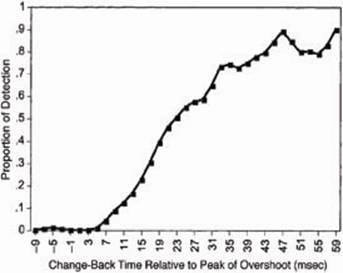The Temporal Limits of Visual Information Acquisition

During a saccade, our visual system processes very little information. In fact, this insensitivity occurs just before, during, and after a saccade (probably to avoid dealing with the smeared image that an eye movement produces). Therefore, after your eyes have come to rest, how quickly does your brain begin to use information from the new point of gaze? The results of our research (McConkie and Loschky, 2002) suggest that perceiving information begins as quickly as 6 ms after the end of a saccade, giving a psychological justification for measuring fixation durations from that point in time. An interesting question is whether, as suggested by the work of Paul van Diepen, information from the center of vision is used earlier than peripheral information. These results, together with those of a follow-up study (Loschky & Wolverton, 2007), are consistent with this idea but do not bear directly on this issue.